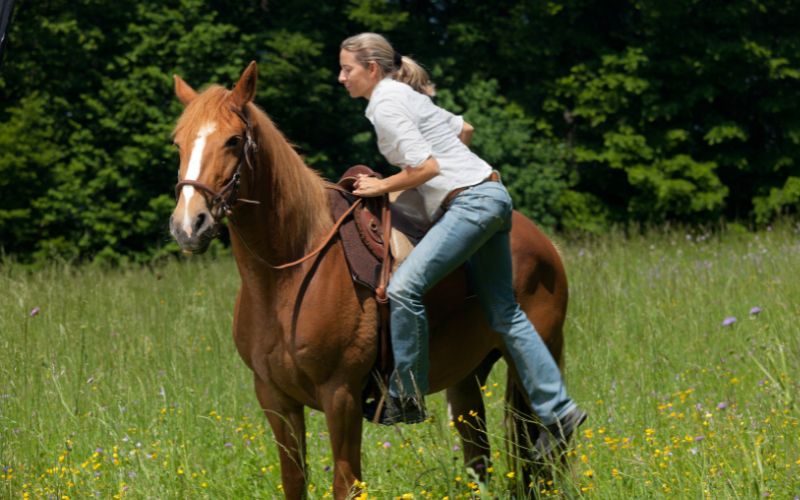
Why won’t my horse stand at the mounting block? Why is my horse hard to mount? Behavior problems during mounting are common and you’re definitely not alone. Mounting block problems are inconvenient, set you and your horse up for conflict from the get-go, and can be very unsafe. The good news? When a horse is hard to mount there is always a cause, and that means there are solutions. Here are the six science-backed reasons that horses are hard to mount and how you can solve them.
When a Horse Won’t Stand for Mounting
Issues with mounting up come in many forms. Your horse might be hesitant to approach the mounting block, needing you to tug on their bridle to get them there. They may approach the mounting block but then swing their hindquarters or forehand away from the block, making it impossible for you to get on. Or they may not wait for you to mount up before taking off.
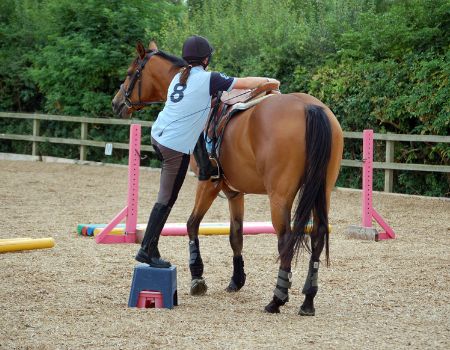
The first two mounting issues are inconvenient, and they definitely don’t look good in front of other equestrians. The third, taking off before you are fully mounted, is extremely unsafe.
No matter what discipline you ride, having a horse who is simple and safe to mount is top priority. But it goes deeper than that: how your horse behaves at the mounting block is a big indicator of how they feel about being ridden.
Issues during mounting can be the first signal that something is wrong and your horse is struggling, so dealing with mounting block problems isn’t just about making the issue go away. For true success, you’ll need to know why your horse won’t stand still at the mounting block.
A Horse Who Won’t Stand for Mounting is Communicating
When a horse avoids the mounting block or won’t stand still, it’s important to treat their behavior as communication – not as the horse being a jerk or trying to get out of work.
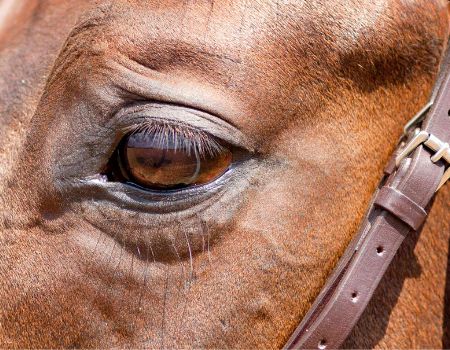
After all, your horse can’t tell you in words if they don’t feel comfortable with something during or after mounting. Their behavior is how they communicate their issues. If everything is good with mounting and riding, there’s no reason for their behavior to break down. And if your horse is struggling, their behavior at the mounting block may be your first clue.
That’s why you won’t find any advice on making your horse “move their feet” if they don’t get it right at the mounting block, or popping the reins to correct any shifting feet. These punishments might work today or tomorrow, but won’t change much in the long term – and can cause your horse to show unsafe behavior during riding instead.
So let’s take a look at the main reasons why your horse is hard to mount.
Mounting Block Behavior is Cause and Effect
Mounting is a complicated behavior for horse and rider. And your horse associates it with what comes after – riding.
If the mounting process and the ride are both enjoyable and positive for your horse, they’ll continue to be pleasant at the mounting block. But if mounting is painful or stressful, they’ll avoid it. It’s simple cause and effect.
Same with riding: mounting comes before riding, so issues with how your horse feels about riding will cause them to struggle during mounting, often before you see problems during the ride. It’s their first way of saying, “This isn’t working for me – can we not?!”
Reason 1: Is Mounting Uncomfortable for Your Horse?
If mounting up is painful or jarring to your horse, it’s totally understandable for them to want to avoid it. Your job as an equestrian is to make sure that you can mount smoothly and easily.
You should be able to lift your leg over the saddle without putting excess pressure on the stirrup or jamming a toe into your horse’s ribs. You should also be able to control the weight of your body as it meets the seat. Mounting shouldn’t involve excess jumping and thumping.

And at the same time, your grip on the reins should be gentle – not putting constant pressure on your horse’s mouth. Check and make sure that you aren’t catching the horse in the mouth by mistake. If you’re in the habit of holding the reins tightly during the mounting process in an attempt to control your horse, that’s enough to make them mounting sour.
Mounting from the ground greatly increases the pressure and force on your horse’s back during mounting, so the biggest step you can take to rule out painful mounting is to use a block.
Make sure your mounting block is tall enough for your horse. Mounting your horse doesn’t have to be hard – it should be effortless! If a one-step block isn’t tall enough, buy or build one that is taller. A three step mounting block like this is an investment, but you’ll get years and years of pain-free mounting.
You can also build this DIY mounting block in one hour using scrap wood, and help turn your horse’s behavior around.
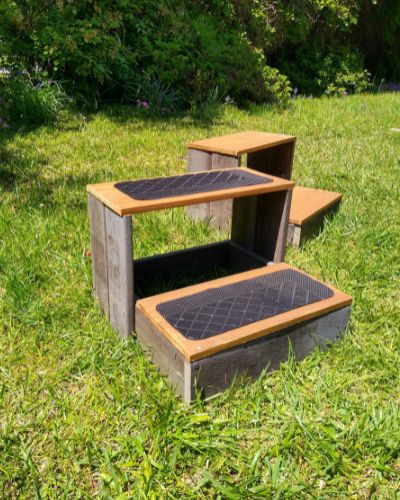
Reason Two: Saddle Fit Affects Mounting Comfort
Saddle fit issues are a huge cause of behavior problems in horses. Unfortunately, badly fitting saddles are probably more common than well fitting ones. A saddle that doesn’t fit causes pain, plain and simple.
A badly fitting saddle can hurt intensely during mounting because mounting creates extra pressure and torque on the back. It will also hurt during the ride, creating a negative association with being mounted. If your horse won’t stand at the mounting block, rule out saddle fit problems first.
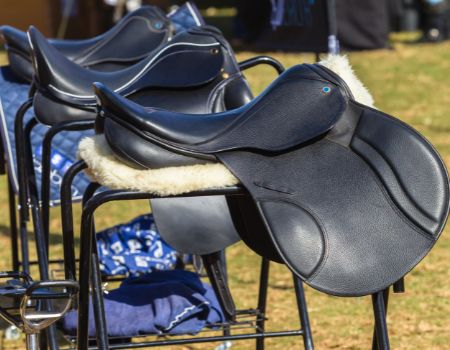
Good news? This issue is correctable. You may have to change saddles, and getting the right fit might mean bringing in a professional fitter. But it’s worth it the inconvenience and cost. Solving the fit issue will improve your horse’s behavior at the mounting block and probably improve their performance undersaddle.
Fix this problem by checking the fit of your saddle. To get an idea if fit is the problem, borrow a treeless saddle and try it temporarily (even if you don’t intend to ride treeless long-term). If your horse’s behavior changes for the better, you may have a fit problem.
If you discover that your saddle didn’t fit, don’t forget some bodywork to reduce soreness before you begin riding again.
Reason Three: Something Else Hurts
Saddle fit isn’t the only cause of physical discomfort. Any condition that causes pain can make your horse hard to mount.
Remember, mounting up isn’t just affected by how the horse feels when you swing a leg over. Anything that happens afterwards impacts how your horse associates with mounting. That means that a painful ride will quickly make a horse less willing to be mounted.
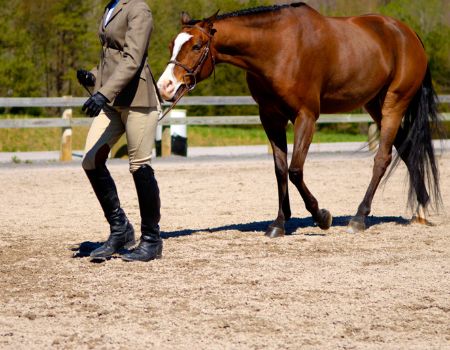
Riding can make many types of body pain worse. Common sources of equine pain include the back – which may or may not be related to riding and saddle fit – and the legs and hooves. A single small joint or tendon problem can be very uncomfortable during a ride.
Pain in the digestive system, such as from ulcers, can also make your horse hard to mount. Riding and other athletic activity worsens this discomfort, and ulcers are unfortunately very common.
If your horse won’t stand at the mounting block, take the possibility of pain seriously. Be on the alert for other signs of trouble during the ride, like stiffness, transition problems, or difficulty with self-carriage. And when in doubt, call the vet. It’s not right to ask a horse to carry a rider when in pain, and doing so will probably cause their behavior to worsen.
Reason Four: Your Riding Affects Mounting Behavior
When a horse doesn’t enjoy the kind of riding you do, or the way you ride, their behavior at the mounting block may deteriorate.
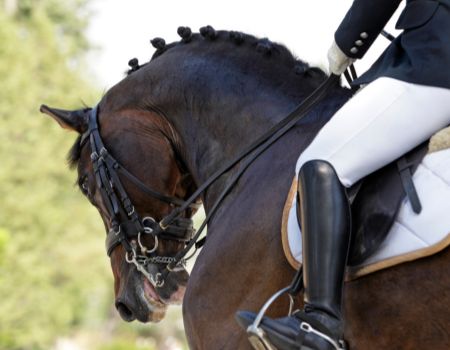
If you’re absolutely sure that your saddle isn’t causing pain and that your horse doesn’t have underlying discomfort in their body, it’s time to examine how they feel about the riding itself. Remember, a horse who won’t stand at the mounting block is communicating.
Take a good, objective look at your riding style and what your horse experiences during each ride. Be honest and non-judgmental. Are you able to ride each gait smoothly, or do some gaits and transitions cause you to bounce or ride unevenly? Are your hands gentle, or do you sometimes catch your horse’s mouth by mistake? And are the aids mild, or do you find yourself having to use your leg and hands heavily to get your horse to respond?
There may be parts of your riding that are uncomfortable or irritating to your horse, often unintentionally. This is enough to make them hesitant to participate. Don’t just expect your horse to get over it – take action to fix the problem before you try to retrain their behavior at the mounting block.
To fix this issue, start by taking video of your ride or have an experienced instructor evaluate how you’re riding in person. You may not be able to tell what’s happening when you’re in the saddle, so having another set of eyes or using video is a must. Then correct any issues – don’t be embarrassed to hire a trainer, no matter how experienced you are.
And don’t forget to look at other kinds of tack you use, including your horse’s bit.
Reason Five: A Hard to Mount Horse May Not Like Their Job
Horses have opinions about their job, just like we do. Because a horse can’t really “pick” their career, we owe it to them to make sure they have a riding job that they enjoy, not one they hate.
If your horse doesn’t like their work, they may become unwilling to stand for mounting.
This isn’t the same as being “lazy” and trying to get out of work. It’s about making sure the horse you’re riding is the right partner for the discipline you like.
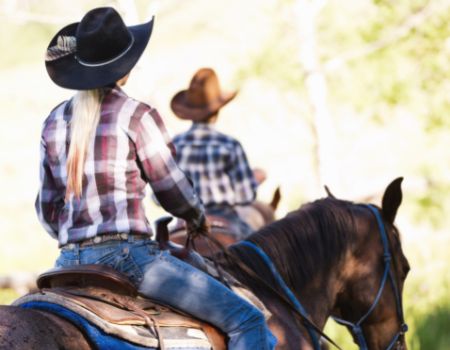
Some horses love the challenge of an off-property trail ride, but others find it overwhelming. Some horses appear to hate the predictability of flatwork in the arena but others seem to look forward to it. And many horses struggle with the stimulation shows and competitions.
Once you’ve ruled out pain and corrected problems with your riding or tack, see how your horse feels about their job.
For a couple of weeks, choose a different style or location of riding. If you usually go over jumps or practice barrels, spend several rides just going at a walk around the rail. If you usually hit the trail, work in an arena or just walk around the yard of the barn.
Giving your horse a few weeks of a different job, or lowered expectations, may change how they respond to the mounting block. If it does, that’s a big signal that your horse was struggling with their job.
But even once you fix any of these four reasons, your horse may not become a mounting block pro overnight. That’s because of Reason #6.
Reason 6: Memory Affects Your Horse’s Mounting Block Behavior
The memory of pain, fear, or discomfort impacts behavior, sometimes for years after the cause goes away. If your horse won’t stand at the mounting block, they may have a long term, negative association with mounting and riding.
Bad experiences earlier in their riding career – including before you owned them – can make your horse associate mounting with being afraid or uncomfortable. The longer the situation lasted and the worse the horse felt, the more powerful this association will be.
This doesn’t mean that every horse who has bad mounting block behavior has been mistreated. Maybe they had a saddle that didn’t fit and no one realized, or were ridden in a discipline they didn’t enjoy. Any of the issues in this article can cause long-term problems. It’s not a “bad habit” – it’s your horse’s mind trying to keep them safe.
To solve this problem, it’s very important to rule out all active problems first. If there’s still an issue going on, your attempts to fix the mounting block behavior won’t work.
After that, working with reward-based training is the best way to change your horse’s association with the mounting block into something more positive.
Horse Won’t Stand at the Mounting Block? It’s NOT These:
Now let’s take a second to look at some incorrect info about why your horse is hard to mount.
There’s a lot of wrong reasons out there. Most of them are wrong because they put human values onto your horse, when horses don’t think about things in exactly the way you do. And many place judgment on the horse or make it the horse’s problem.
The hard to mount horse doesn’t respect you
This is the most common explanation given for why horses don’t stand at the mounting block. In this logic, not standing at the mounting block is disrespectful. Your horse doesn’t respect you enough to remain in place while you climb aboard.
The truth is, horses don’t understand “respect” the same way people do. They’re not being “disrespectful” on purpose because they don’t see mounting as having anything to do with herd dynamics.
The hard to mount horse wants to get one over on you
Related to respect is the idea that if your horse is hard to mount, they’re trying to get the best of you.
The reason this idea doesn’t shake out is that problems at the mounting block aren’t about you personally, and horses don’t play practical jokes on humans. Avoiding being mounted isn’t a horse’s way of having a laugh.
The hard to mount horse is being lazy
If dancing away at the mounting block delays riding, it must mean your horse is lazy or trying to shirk their job, right?
Not quite. Avoiding being mounted can be a sign of a problem with the mounting process or the specific riding style, but be careful not to assume your horse has a problem with being ridden at all. They may be communicating a specific problem that you can fix.
Fixing the Hard to Mount Horse
Punishing a hard to mount horse isn’t usually helpful in the long run. This includes making their feet move if they walk off, to try and make standing still “easier” for them. This kind of thing doesn’t change how your horse feels, and actually makes the mounting-up experience more tense, unpleasant, or scary. That’s not ideal for long-term change.
Instead, try reward-based training (positive reinforcement). A good training plan that teaches your horse what they should do when they see the mounting block is the best way to get better behavior that lasts – without the threat of punishment. And make absolutely sure you’ve ruled out all the above issues first, so that you both have a fair shot at success.
If you’re curious about how positive reinforcement can change behavior, it’s all spelled out on this page.